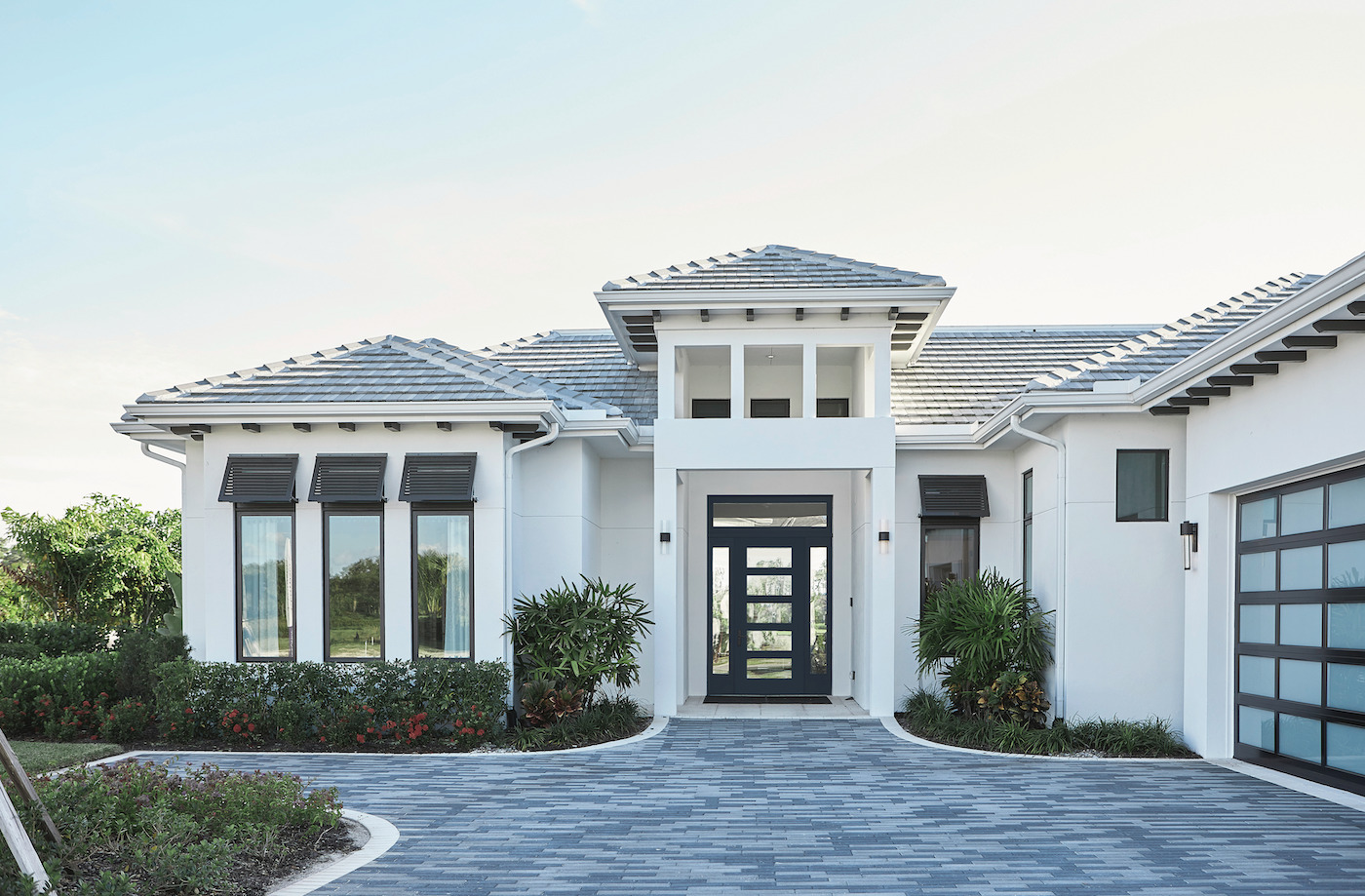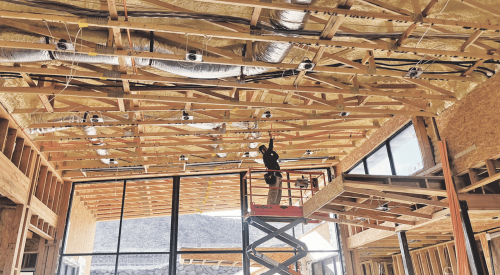Energy efficient homes are on the rise. With solar panels that produce more electricity than they use, building an energy friendly home is simple. Even though these types of homes incur a higher price tag, industry pros are helping homeowners see the return on investment. Some builders claim they can make the higher prices virtually disappear.
This approach is called Net Zero home building. As the next step beyond ENERGY STAR, it represents the cutting edge of energy-efficient, high-performance construction. Now, thanks to more sophisticated building products, better developed building science, and tax incentives for solar, it seems poised to go mainstream.
Net Zero has been the topic of countless magazine articles in recent years and has even spawned a government agency: the U.S. Department of Energy’s Zero Energy Ready Home program. GreenBuildingAdvisor.com estimates a 33% growth in the program from 2015 to 2016 alone, and some forward-thinking production builders are building entire communities of these homes.
RELATED
- What 1,240 Homeowners Said They Want in a Healthy Home
- How a Virginia Builder Profits From Net-Zero Energy Homes
But while such growth is encouraging, Net Zero isn’t as common as its press coverage would imply. It still accounts for less than 1% of U.S. housing stock.
The question is why?
Breaking the Language Barrier
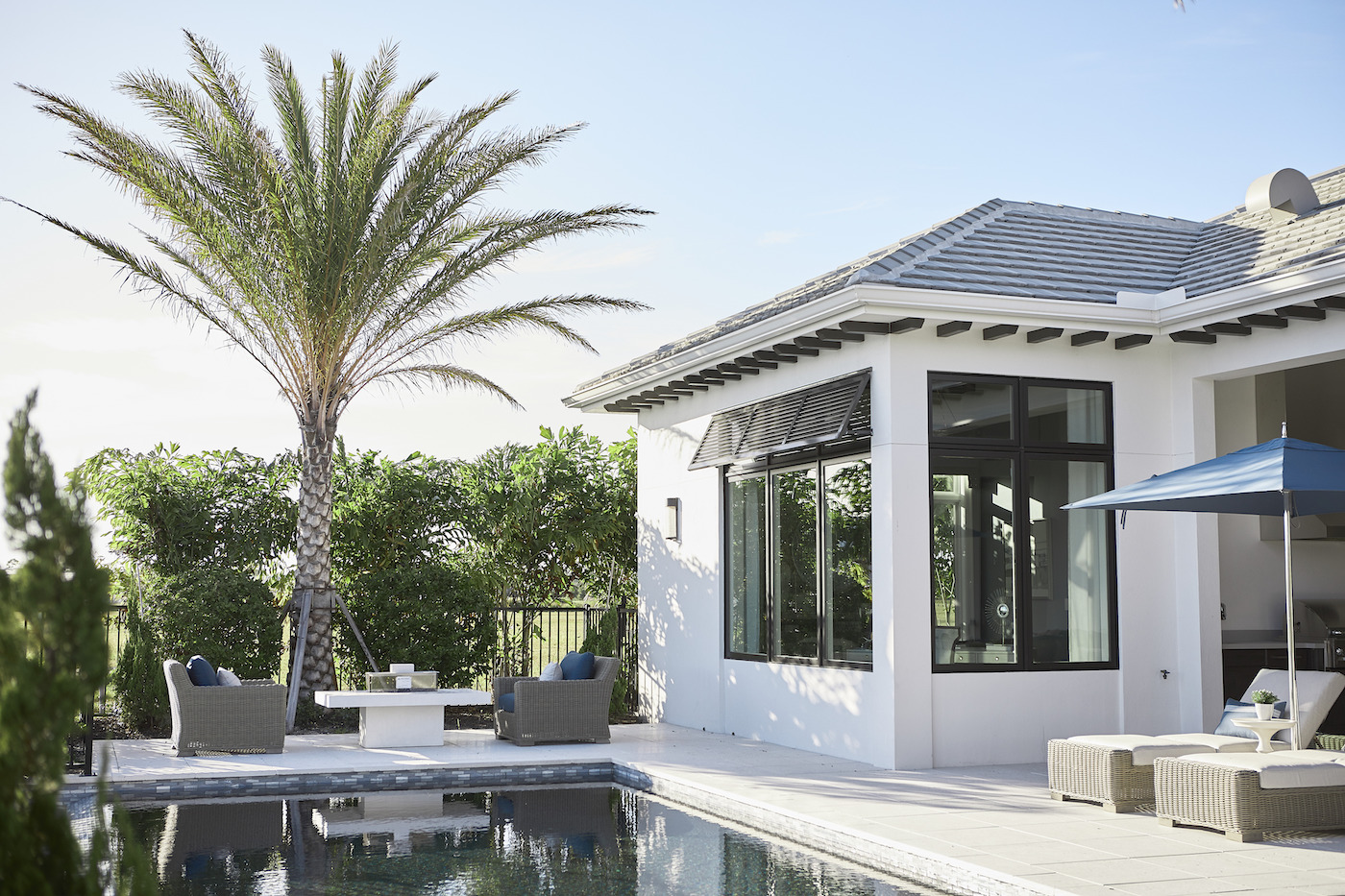
James Geppner believes that further growth is hindered by how architects and builders currently talk about Net Zero. They’re not helping home buyers see that Net Zero homes solve the problems they consider important, such as utility bills and their family’s health.
Geppner is executive director of Erase40.org, whose mission is “to use behavioral science to speed the adoption of low and zero energy buildings.” His new Meeting Map offers a way to guide the decision-making process and illuminate how Net Zero addresses concerns: how to keep the home in a comfortable temperature range, how to ensure good indoor air quality, how to block out street noise, how to minimize energy and maintenance costs, and how to maintain resale value.
The Meeting Map grew out of interviews with hundreds of builders, architects, and home buyers, during which Geppner learned how the most successful pros addressed their clients’ concerns.
Take the issue of money. Until recently, payback was the go-to sales metric for all high-performance construction. “The high-efficiency heat pump costs more up front, but the money you save on heating and cooling will pay back those extra dollars in a few years.” It sounds compelling, but asking home buyers to take a long view is not always effective.
“Customers don’t understand long-term payback and don’t care about it,” says Gene Myers, CEO of Denver’s Thrive Homebuilders, a production builder that will complete more than 200 Zero Energy homes this year. “They understand dollars per month.”
The reason, Geppner says, is “future discounting.” Left to themselves, the home buyer will splurge on expensive plumbing fixtures while ignoring features that offer long-term benefits like clean indoor air and a lower cost of living. “They can end up with a good-looking home that makes them poor and sick.”
The solution is not to de-emphasize design or amenities—they are as important here as in any home. However, the architect and builder need to help buyers grasp the present value of those long-term benefits.
Focus on Present Value
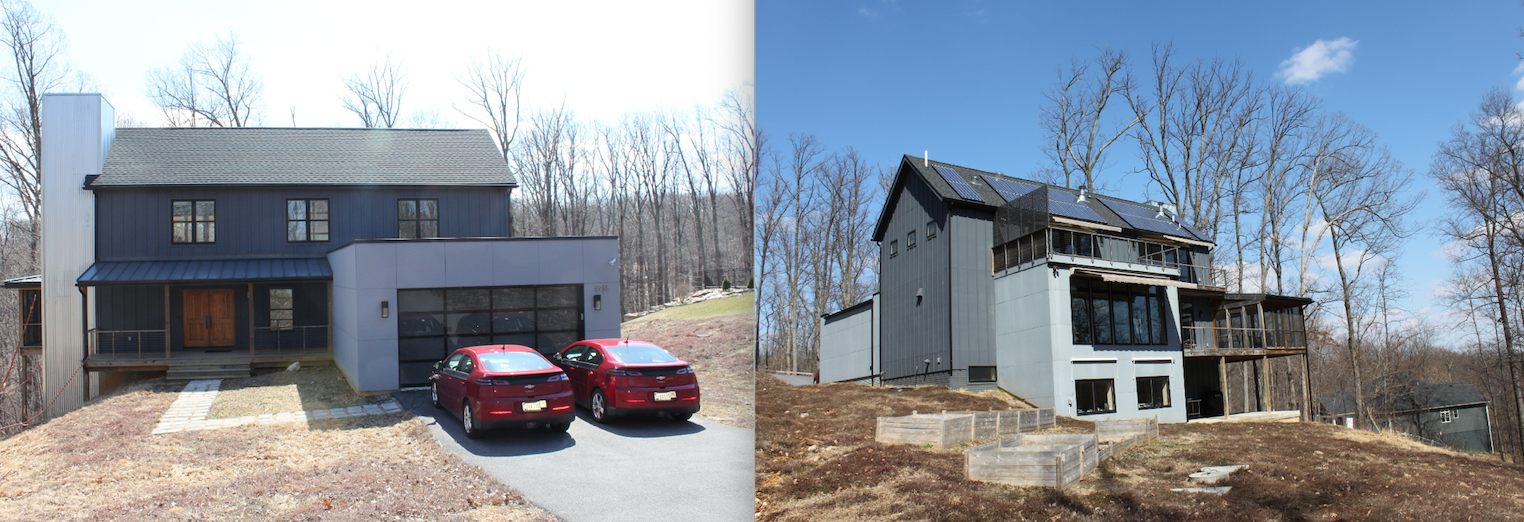
While industry professionals understand the terms Net Zero and high performance, successful builders in this niche speak to the benefits of Net Zero home ownership. They show buyers how monthly energy savings from thicker attic insulation, more efficient windows, solar panels and other features will more than offset the cost those features add to the mortgage payment. The net result will be a lower cost of living on a more tangible monthly basis.
For instance, Tampa-area builder Marc Rutenberg recently completed a model home he calls the No Electric Bill Home. “It’s a term everyone understands,” he says. He is also building a 14-home Zero Energy Village and is marketing it with a “No Electric Bill” label. It has proven a great conversation starter. “Most people don’t know that it’s an option not to have an electric bill,” he says.
Architect and builder John Spears takes a similar approach. His company, Sustainable Design Group, in Gaithersburg, Md., built the first affordable Zero Energy subdivision in the mid-Atlantic region in nearby Frederick. The 58 townhomes targeted a decidedly budget-conscious market, so comparing monthly cash flow to a code-minimum home was crucial. “If you’re going to add $20,000 to the cost of the house, you need to make the case for why that’s a good investment,” says Spears. “In the end, our buyers saved $90 per month plus got a $12,000 annual tax credit.”
The Frederick homes sold out in record time, and Spears has since helped others understand how to communicate these benefits. “I’ve trained real estate people how to communicate positive cash flow to buyers. When they get it, they sell homes like hotcakes.”
When working with less price-sensitive clients, Spears puts more emphasis on other benefits, such as resilience. “Many of our clients worry about power outages, but our homes have solar power and include battery backup,” he says. He has seen the effectiveness of this in his own home. “Not long ago, our area lost power for about a week, but we were up and running the whole time.”
Selling Clean Air

The resilience discussion is just one example of how cost savings aren’t always enough to clinch the sale. The cliché that people buy on emotion and justify the spend with numbers turns out to be true. You need to offer something that makes them feel good—safe, wise, or virtuous.
The hottest emotional button is health, especially for people with children. It’s also a major benefit offered by a well-crafted high performance or Net Zero home.
Health is even more important where high-performance construction has become the norm. That’s the case in Phoenix, where Dennis Webb, VP of Operations at Fulton Homes, says that ENERGY STAR is no longer innovative. “It has become an ante to get in the game,” he says.
To differentiate itself further, Fulton joined the EPA’s Indoor airPLUS program. Fulton Homes now specifies low-VOC adhesives, carpeting, electronic air cleaners, and radon detectors. Webb says that it adds just a few hundred dollars per home, which the company absorbs.
It’s money well spent. “Indoor airPLUS has given us a decisive advantage,” he says. “Consumers perceive us as cutting edge.” It also addresses one of parents’ biggest worries. “About 12% of kids in Arizona have asthma, so we ask people if they would rather live in a home with healthy air or stale air.”
Thrive also addresses parents’ concern for their children in its marketing. One of its ads shows a young mother feeding her baby. The tagline: “What she’s breathing is as important as what you’re feeding her.”
The power of pressing these emotional buttons is backed up by research. The Knoxville, Tenn.-based Shelton Group surveyed more than 2,000 homeowners in August of 2018 as part of its annual Energy Pulse study. It concluded that nearly half of target buyers for green homes will pay 5% to 10% extra if a home offers benefits they consider important.
How to Get Noticed
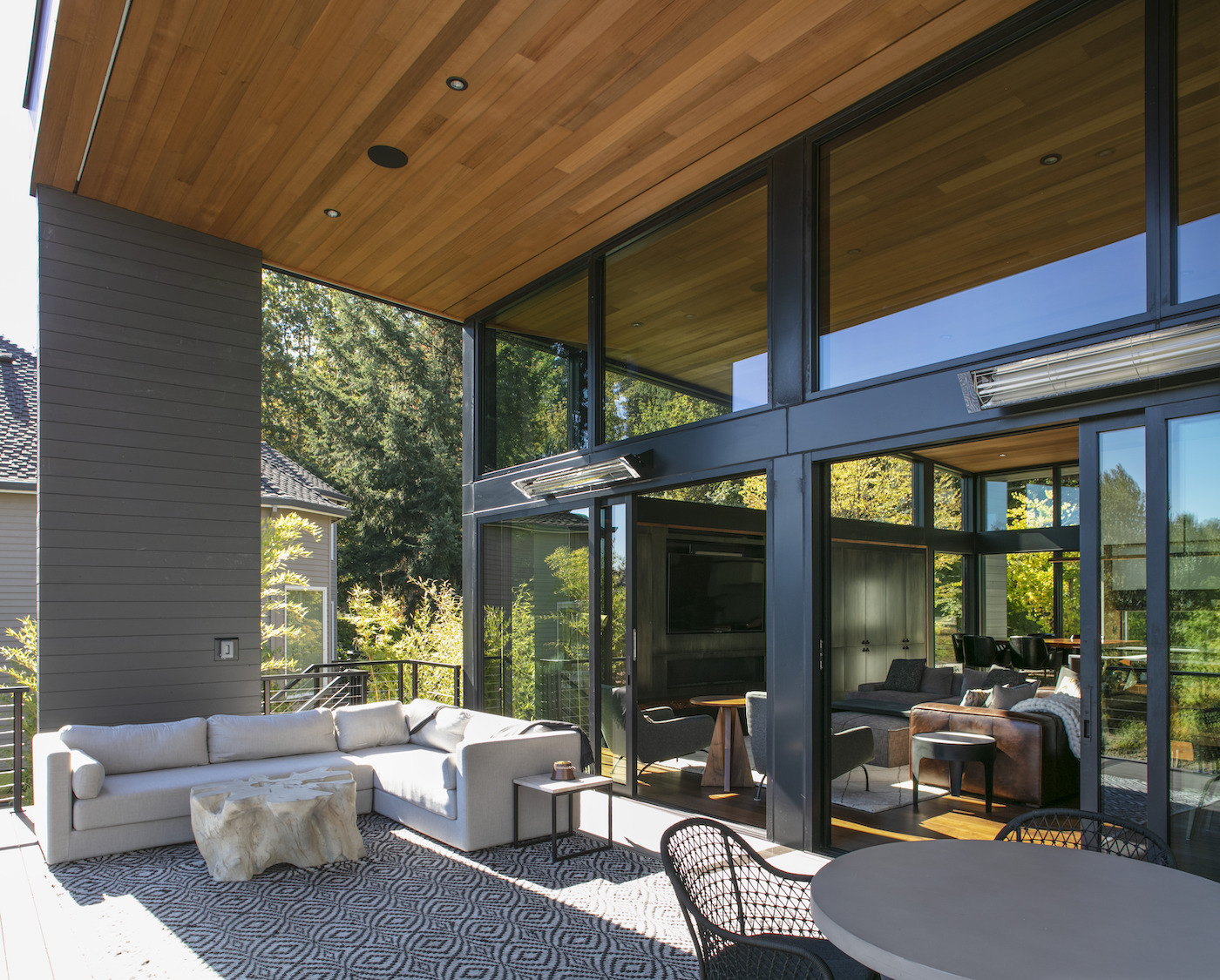
Of course, you can’t sell those benefits to consumers unless you first catch their attention. That sheds a light on an often-overlooked key to success in the Net Zero niche: great architecture.
That makes sense when you remember that home shopping is like dating: While the success of a long-term match will depend mostly on substance, the initial attraction will likely be based on looks. Case in point is Seattle’s Dwell Development. All of the 300 homes it has built over the past 14 years perform at least 50% better than code minimum. Today, all of its projects are Net Zero Ready.
But while efficiency and sustainability are a huge part of Dwell’s marketing message, company principal Anthony Maschmedt says that architecture is what draws most buyers to the company. In addition to a Housing Innovation Award from the Department of Energy, it has won numerous design awards, including a prestigious Gold Nugget Award.
“You have to put design first—a great exterior is what gets people out of the car and into the house,” he says. “Once there, you need to wow them with an interior that’s as architecturally interesting as possible.”
He’s also a big advocate of professional architectural photography. Great photos are the first thing one sees when visiting the company’s website or Instagram page, and Amy Golden of Paxson Fay, the company’s marketing firm, says that Dwell invests more on images and that they generate a lot of traffic. “They help us connect with people who haven’t heard about Dwell,” she says.
This wow factor makes potential buyers more eager to discuss sustainability. “Once [buyers] see our beautiful interiors they want to know more,” says Maschmedt. “That’s when it’s time to start explaining how we detailed the construction and how solar panels will give them free electricity from day one.”
HERS rating: Not Just a Number
A HERS rating is more than an efficiency benchmark. It’s a powerful tool for marketing and quality assurance.
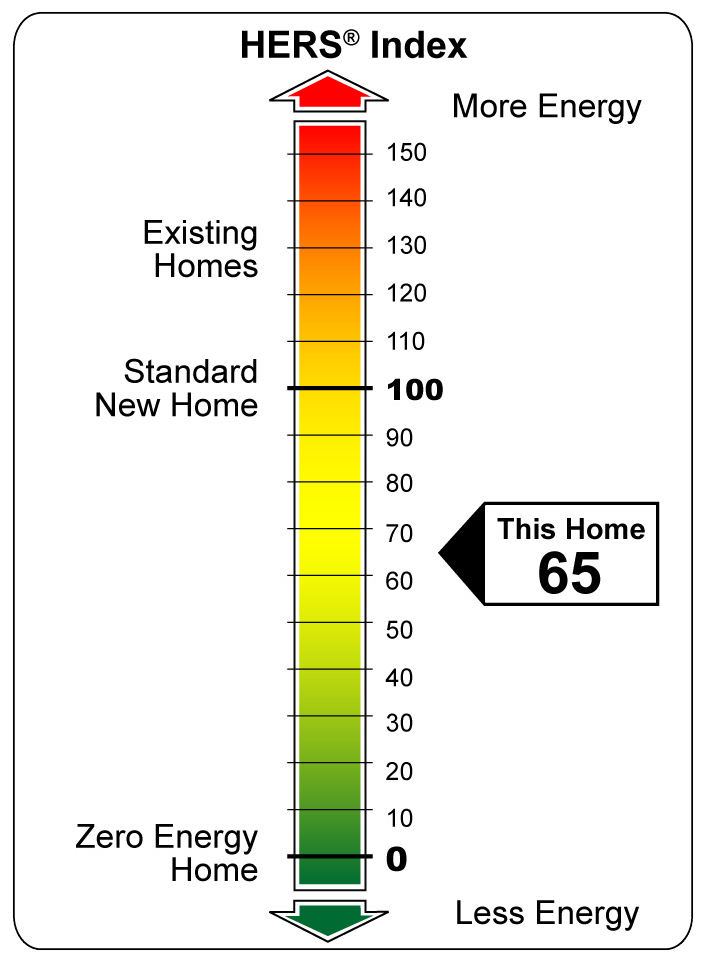
The Residential Energy Service Network’s (RESNET’s) Home Energy Rating System (HERS) has become the benchmark for quantifying energy efficient construction. It was added to the International Energy Conservation Code in 2015 and is used to qualify a home for Zero Energy Ready Home designation.
However, it’s still only used by a minority of builders. “RESNET estimates that just 20% of new single-family units done in the U.S. have a HERS rating,” says Steve Byers, principal of Energy Logic in Berthoud, Colo., a rating and quality assurance (QA) company that also trains energy raters nationwide.
That’s unfortunate. Done right, the HERS rating process offers more than compliance: It’s a valuable addition to the builder’s marketing and QA toolboxes.
HERS Scoring Process
The HERS score compares a home’s energy use to a hypothetical reference home of similar size and design built to 2006 energy code minimums. Every point above or below that denotes a 1% increase or decrease in energy use. A home as efficient as the reference is scored 100 points. A score of zero produces as much energy as it consumes, typically via rooftop solar.
You could theoretically put a massive solar array on an energy hog but, besides making no financial sense, that would violate the spirit of Net Zero, which assumes the home has been engineered as an energy miser that uses as few panels as possible. That’s why the DOE’s Zero Energy Ready Home program requires that to earn certification, a home must score at or below the mid-50s—half the energy use of a typical new home.
HERS is a powerful tool for improvement
A low score is a chance for the builder to help buyers understand how energy efficiency lowers long-term ownership costs. This understanding seems to be a key to overcoming future discounting—people’s tendency to put short-term pleasure over long-term gain. A 2016 study by the North Carolina Building Performance Association of 34,000 high-performance homes found a strong link between a lower HERS score and a higher sale price. Some multiple listing services are even adding HERS scores to their home descriptions.
Besides compliance and marketing, the scoring process can also be a great tool for quality assurance. “We’re really a quality assurance company,” says Byers.
The QA process can start long before construction begins. “A good rater will be able to look at a plan and see what’s going to be hard to get right from a performance perspective,” says Byers. For instance, the rater might spot a complicated roof plan with areas that will be hard to insulate and air seal and can suggest locations for duct chases.
“We aim to lower the builder’s risk profile with an additional level of quality assurance above and beyond what the project superintendent and code inspector provide,” says Byers. “Few builders understand the benefit of working with a HERS rater.”
Flattening the Learning Curve
Tools for mastering Net Zero home building
The path to a high-performance or Net Zero home is a well-trod one. It’s supported by proven building science principles refined over decades. These principles apply to remodeling as well as to new construction.
The path has a simple outline: create a super-efficient building shell with lots of insulation, low air leakage, and the best windows and doors possible. Add high-efficiency HVAC. Use nontoxic materials and install fresh air ventilation.
Of course, the devil, as they say, is in the details, and most builders and remodelers gradually improve their results with each project. Here are some ideas to help you improve more quickly.
Start with training. Done wrong, tight construction can create moisture or air quality problems. To avoid them, get some good basic training.
The Energy and Environmental Building Alliance (EEBA) holds seminars around the country, and Construction Instruction in Phoenix trains builders in a lab where they get hands-on experience with actual building systems. Both offer classes in applied building science and mechanical systems.
Learn from software. Gaithersburg, Md., architect and design/build remodeler John Spears runs his plans through an energy simulation program called REM/Design. He inputs wall areas, the R-values of surfaces, and the mechanical system efficiencies. He can also add solar orientation and overhangs to determine solar gain and shading.
The software calculates the home’s overall heating and cooling loads and details how each component contributes to it. According to Spears, the results usually identify the biggest loads in most homes as air infiltration, windows, and attic insulation, so he prioritizes these when designing a home. They’re also the first things he addresses in a remodel.
Simulation software also offers the designer value-engineered building performance. “I can see what the effect on monthly energy use will be if I spend an extra $50 here or $100 there,” he says. “This is a big help when you want to design a cost-effective Net Zero home.”
Software also helps the builder work with the rater. The data from REM/Design can be inputted to REM/Rate for the rater to use when calculating the HERS score.
Rely on manufacturer support. Although building components seem to get more technical and complex every year, this complexity brings more choices.
Tampa-area builder Marc Rutenberg aims for a negative HERS score, which denotes a house that generates more energy than it consumes. To get there, he builds a super-efficient envelope, using products that include triple-glazed JELD-WEN windows.
Builders who don’t have the budget for that need not worry. According to Jason Kantola, JELD-WEN’s coordinating certification manager, most builders can meet Zero Energy goals with double-pane ENERGY STAR certified windows that are available in any architectural style. “We offer tools and performance charts that make it easy to pick the right one,” he says. The company’s architectural consultants work with builder customers to choose the best windows for their performance goals and budget.
For more information:
For assistance with your 2021 home building projects, visit JELD-WEN’s professional portal.
Additional assistance with window and door specification for Net Zero and high-performance home building is available from your JELD-WEN Architectural Consultant. Find yours when you register here.
See why JELD-WEN’s extensive offering of high-quality wood and vinyl windows includes the right windows for your next build.
Need to know more about specifying the correct performance or decorative glass for your windows? This guide will help.
Enhance your projects with interior doors and exterior doors that bring design, efficiency, and functionality.
Create a connection between indoor and outdoor living spaces with patio doors.


